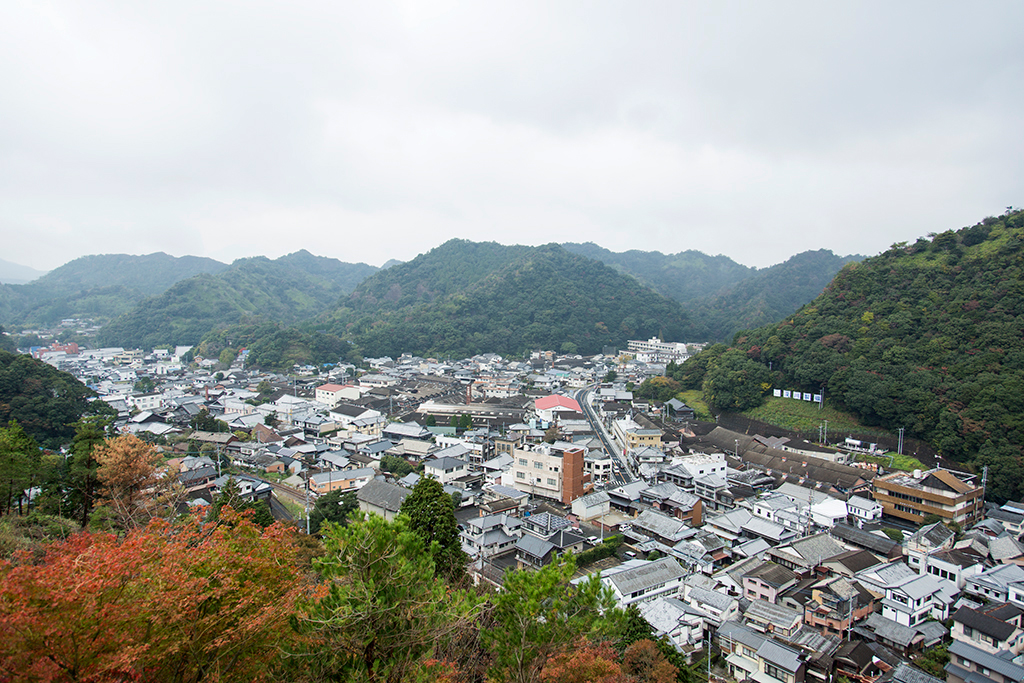
arita
The town of Arita is to be found on the western side of Saga Prefecture, in a rural area of outstanding natural beauty blessed with an abundance of varying landscapes and a temperate climate. To the north lies Imari City, to the east you will find Takeo City, just over the prefectural boundary in the west is the city of Sasebo (Nagasaki Prefecture) and finally the town of Hasami, also famed for its ceramics, sits to Arita’s south. The Arita River flows northward towards Imari and the town is nestled between the impressive Kunimi and Kurokami mountain ranges stretching across the landscape from east to west. The town has a population of 20,385 people spread across 7,852 households and covers a total area of 65.85km² (as of November 1st 2017).
It was in 1616 that a potter from Korea, Yi Sam-pyeong, first discovered porcelain stone at the Izumiyama quarry which catapulted Arita into becoming the first porcelain manufacturing centre in all of Japan. Subsequently, under the rule of the feudal Saga Clan, porcelain production was stimulated and a flourishing townscape began to take shape in the valley below. In the present day, the streets of Arita are still lined with numerous buildings of historic importance and in 1991 the Uchiyama district was designated as a national conservation area for important historical buildings. On the other side of town, the landscape is dominated by its distinctive terraced rice fields and the area is known as a centre of livestock farming in Saga. Built on the twin industries of ceramics and agriculture, Arita is a town rich in tradition and history steeped in its blessed natural geography.
The area where our residents live and work is dotted with an array of professionals involved in all stages of the porcelain industry including ceramic artists, mould-makers, greenware-makers, glaze and pigment manufacturers, print transfer specialists, potteries, trading companies etc. There are currently around 85 potteries of varying sizes, as well as many traditional craftsmen, meaning this small town of merely 20,000 people is well equipped with the infrastructure and ability to design, manufacture and sell exquisite porcelain.
Furthermore, there are ceramic educational institutions such as the Saga Ceramics Research Laboratory training facility which offers short-term courses on the acquisition of technical skills related to porcelain production and the Arita Campus of Saga University that specialises in creative ceramic research and design education. Here, exchange students from Design Academy Eindhoven (The Netherlands) and the University of Art and Design Halle (Germany) are welcomed to study in Arita.
Finally, the Saga Ceramics Research Laboratory, which also houses the residency studio space, is home to researchers specialising in all areas of ceramic production, providing technical support to local potteries and manufacturers and developing new materials and techniques in collaboration with local businesses. Since 2016 the laboratory has provided visiting artists and designers with their own studio space for production as well as with any advice and technical support they may require.
During the 3-month stay in Arita, residents can build upon many of the institutions and businesses in the research, education and production fields described above. While using the studio at the laboratory as their production base, creators of the residency programme will be in constant touch with their collaborating potter and the various other facilities at their disposal.
For more detailed information on the Saga Ceramics Research Laboratory studio space, please visit the workspace section on the Programme page.
